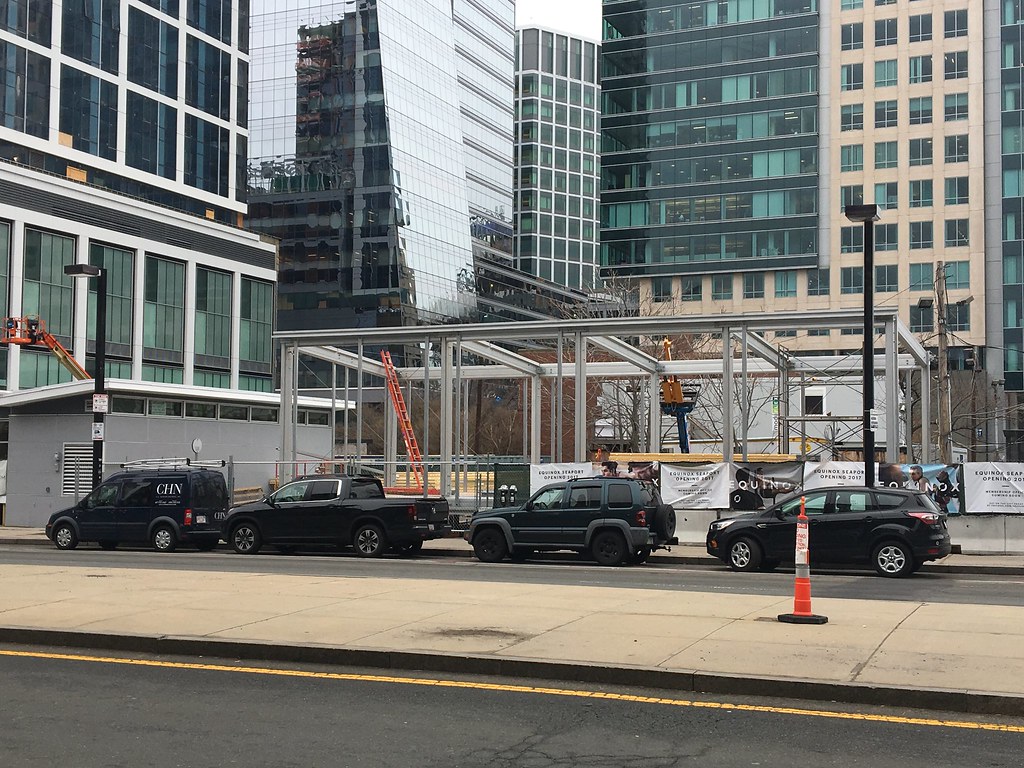Please elaborate on your model for the public good use in the Seaport. Is it acres and expansive swaths of park, recreational, and public spaces throughout the whole waterfront? It sounds great in theory, but it would be a large financial commitment for ongoing upkeep by the city and/or state. I get that a lot of taxpayer money went to developers, but the businesses, condos, and apartments will be generating on-going streams of tax revenues, even with the incentives in place. Public parks generally do not generate sufficient revenues to be self-sustaining. Exceptions exist of course, but they generally also rely on corporate sponsorship and payments from nearby property owners on top of public funding.
Just as one example, the Rose Kennedy Greenway is fairly new, but as expected, continued public funding is in jeopardy. I for one really hope for the best here, but there will always be that realistic chance of public funding suddenly drying up.
Don't forget that the Seaport was NOT a desirable area for many years. No businesses were going to take a chance on setting up shop on a field of surface parking lots and also agree to fund the development and on-going maintenance of large public spaces by the water. They needed incentive to build in the Seaport.
By the way, I have no connection with developers or any of the businesses in the Seaport. I'm also no expert at all on urban planning/building. I just think the Seaport is a result of current economic forces. It's also still a work in progress which other posters kindly remind us from time to time.
Just my two cents. Hoping for an engaging discussion here and to learn a thing or two if I'm wrong.
This comes down to commonsense-
I'm assuming everything is unique and depends on the timing and societies needs at those times concerning certain areas to develop.
Currently Boston is in a boom stage
Seaport Area was all Open parking lots to the waterfront-
City/State should have setout goals for the area and ruffled out all the variance& zoning laws out for development in the area according with the FAA and the city/state goals.
City/State should have drew up a plans for Infrastructure that would make the area more walking/friendly and fast commuter-rail efficient/
*Build an underground hardrail stops
*Monorail around the Seaport
*Trolley type Greenline
Something that would give a better options than automobiles.
The city/State should have built out the infrastructure first knowing this area was priceless.
Then let the private developers build according to the variance and zoning laws allowed in the area.
Good & bad architecture would be determined by the Private sector.
Seaport was never going to be the Backbay--on the water. The parcels cost too much. It was going to be highrises----but so far they have failed to activate and connect the area with anything along with being a traffic nightmare to get to.
If the city actually built a located Transit location like
North Station-
South Station
DTX
Park St.
Haymarket
SEAPORT Station===A couple of hardrails cross into the area/along with a commuting from the ocean--This would have added so much value to Boston
This might have took some relief from overall Southie parking/traffic scenario.
TRANSIT----that is very efficient/easy to use makes the cities a fun place to live especially when you don't need a car. Seaport they built the area up only to realize you need a car for convenience.
That is MY GRIPE
Do you really need to hand out massive tax incentives to build-out on Boston most desirable piece of oceanfront? These are open parking lots? So the developers need incentive. The reality is if they just built the infrastructure the demand would have been there.

